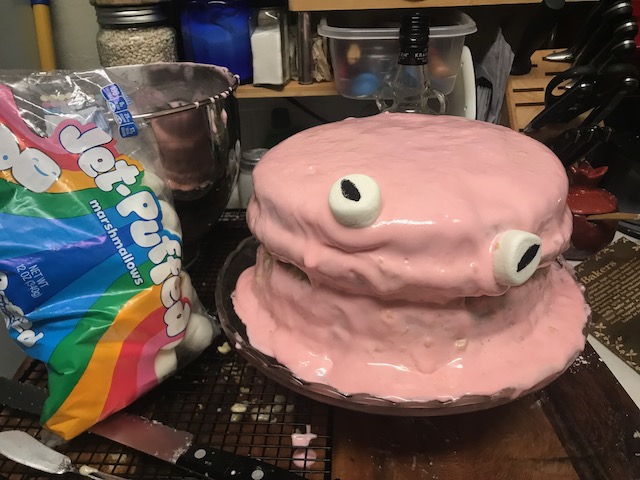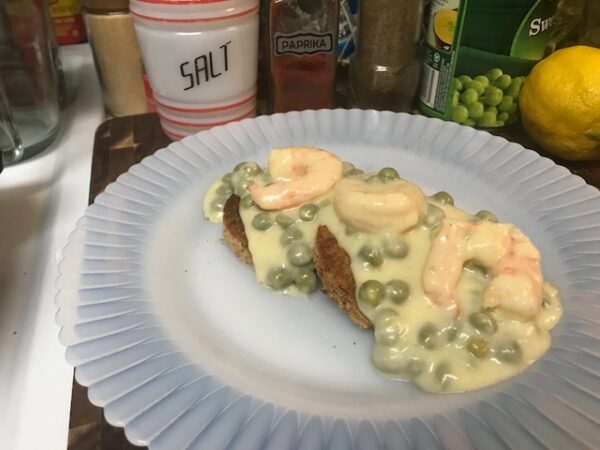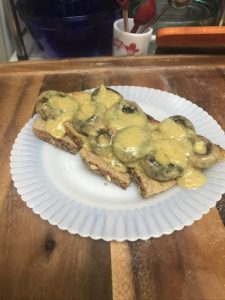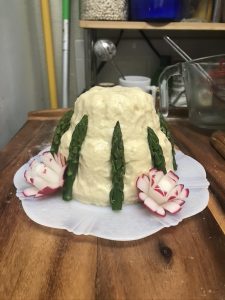From the February 8th, 1935 edition of the Brooklyn Daily Eagle, via Steve Rogers’ New York

Spanish Almond Layer Cake
Cream light 1 ¾ cups (12 ounces) powdered sugar and 1 ¼ cups (10 ounces butter) [sic]. Gradually add seven eggs, one at a time — rub until smooth. Mix two teaspoonfuls of vanilla extract with ¾ cup of milk. Sift thoroughly (three times) four cups (one pound) flour and four tablespoons (one ounce) baking powder.
Filling
Mix ¼ pound of almond paste and 1 ¼ cup (one-half pound) sugar. Thin up with cream. Work smooth. Add two cups (one-half pound) chopped almonds and rum. Then add balance of one-half pint of cream, making one-half pint altogether. Flavour with rum to suit taste. Frost pink.
This recipe leaves a lot to be desired. Things such as instructions for baking or assembling, or indeed accurate measurements. To fill the gaps I turned to my cookbooks.
The Joy of Cooking’s rule for butter cakes says to bake at 350, or at 325 slowly increasing to 350. The 1939 American Woman’s cookbook says butter cakes should be baked at 350 to 375, and gives more detailed instructions for determining baking time.
“The Time for Baking depends on the thickness of the cake. Cup cakes take from twenty to thirty minutes, layer cakes about twenty minutes,, and loaf cakes from forty-five to sixty minutes.
Divide the time of baking into quarters: (1) During the first quarter, the cake should rise and little bubbles form on the top; (2) in the second quarter, it should continue to rise and to form the crust; (3) in the third quarter, it should begin to brown, and (4) at the end of the fourth quarter it should be browned sufficiently and shrink from the tin.
Testing the Cake—When the cake is fully baked, it will shrink from the sides of the pan. When touched lightly with the finger it will spring back. If the finger leaves a depression, the cake is not done. Another test is to insert a clean wooden toothpick into the middle of the cake. If no particles of batter adhere to it when it is drawn out, the cake is done”
(Berolzheimer p.454)
I opted to bake at 350.
For the measurements, I could find no way 1-3/4 cups of powdered sugar could possibly equal 12oz, especially when 1-1/4 cup of sugar is later described as half a pound (8oz). Furthermore, 4 tablespoons of baking powder weighs only 1/2 oz, and I refuse to believe the author could possibly have intended me to use 8 tablespoons. I have therefore decided to use post-Frannie Farmer level volume measures, and hope it works.
I used an electric mixer to cream butter, sugar, and eggs, then hand mixed in the flour. Lacking clear directions, I used two layer cake tins.
The batter was almost too thick, more of a dough than a batter. I scooped it into the cake tins and pressed it into the edges. Maybe I used too much flour? I used all-purpose instead of cake flour, and measured by sifted volume rather than weight.
For the filling, I weighed out the almond paste, and cut it into the sugar until smooth. Once the cream was added, the filling was much more liquid than I expected. In retrospect, it is probably intended to soak into the cake, like a rum cake, rather than being stuck as-is between the layers. I did not think of this until afterwards.





For the icing I opted for a maraschino boiled icing from a 1940 cake recipe. I thought maraschino would compliment the almond, and fulfill the instructions to “Frost pink”.
Maraschino Icing: Use juice from 8-oz. bottle of maraschino cherries; add enough water to make ½ cup. Boil juice and 2 cups sugar until syrup spins a thread (238 F.). Pour slowly over 2 beaten egg whites, beating constantly till icing holds shape.



Having made the various components, I began to assemble the cake. This is where things began to go truly wrong.
There was way too much filling for two layers so I decided to cut each layer in half and have four layers. I did not cut the top of each layer level. I probably should have. I carefully piped an outer ring of frosting around the perimeter of each layer in a vain hope to contain the soupy almond filling. Turns out boiled icing lacks the structural firmness of buttercream, and I now suspect you’re supposed to let the icing cool down more before using it.






Sticky almond sludge almost immediately began oozing down the sides. This meant the icing would not adhere to the sides of the cake and it too began to ooze and drip and puddle. I tried scraping off the excess almond filling and reapplying the icing, scooping up the puddle and filling in the gaps. I had sticky filling and pink meringue fluff up to my elbows and smeared across my face. No matter what I tried it just oozed faster. I had the cake from Sleeping Beauty.
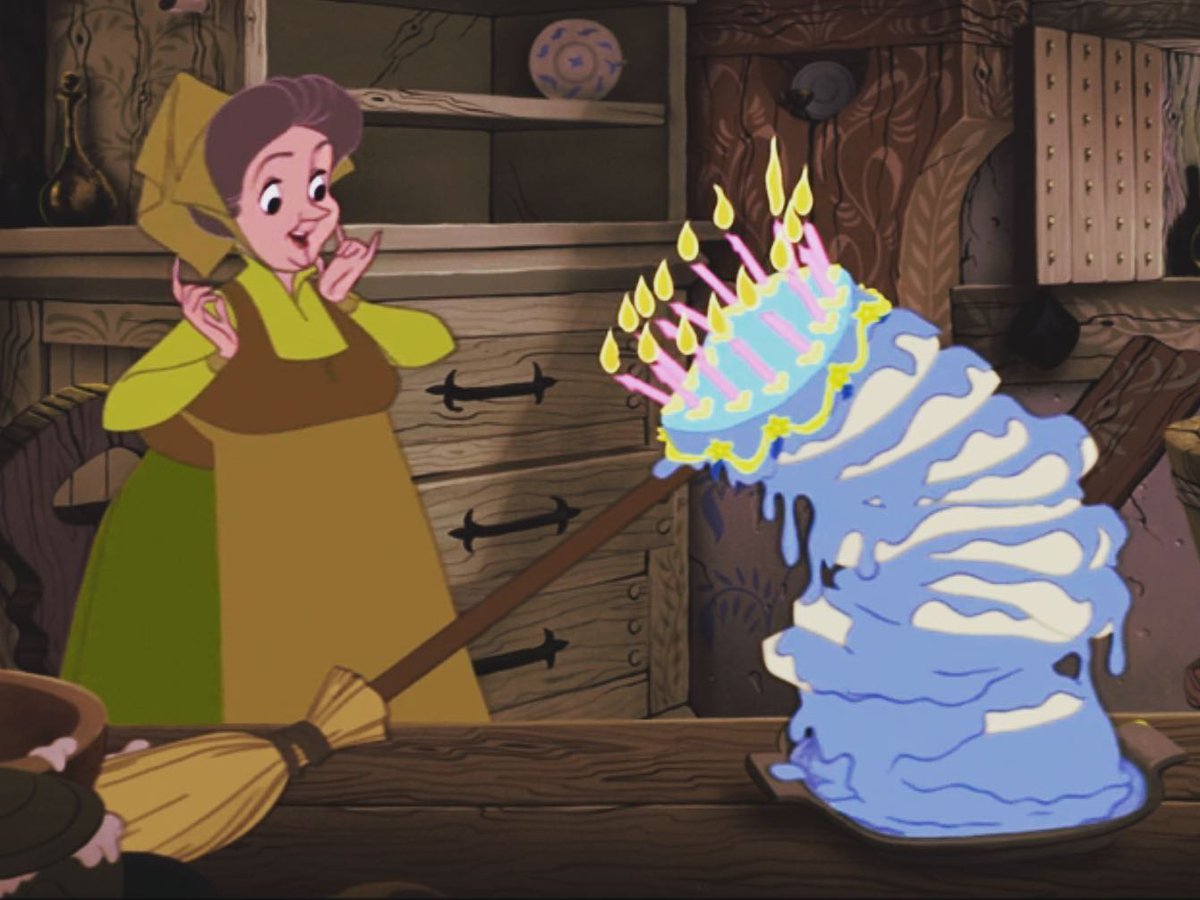
Clearly, it was time for drastic measures. Cackling like a mad woman I cut a marshmallow in half, drew on food coloring pupils, and stuck it on. Then I sent pictures to my friends. Googly eyes can fix many things. It’s not a disaster; it’s a design choice!
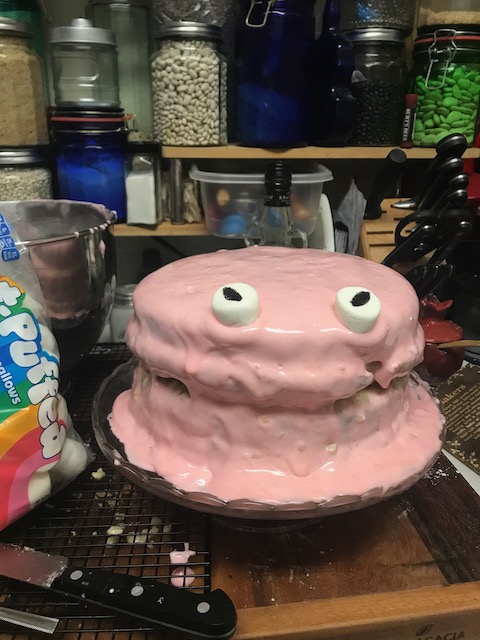
After all what does it matter how it looks, as long as the cake tastes good? It’s food; it’s meant to be eaten.
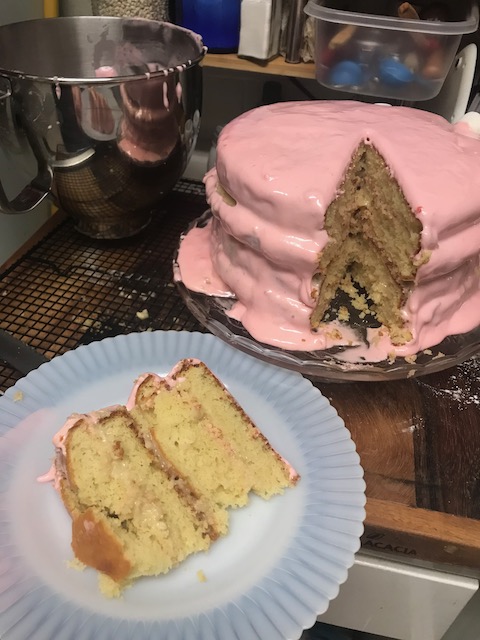
Reader, it tasted terrible.
I wanted to like this cake, as I adore almond cakes, but alas. The cake itself isn’t sweet and tastes strongly of baking soda. The filling is cloyingly sweet, and the texture of the chewy chopped almonds contrasted with the soft cake and sticky icing was not to my taste.
I tried.
